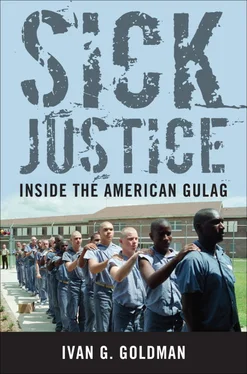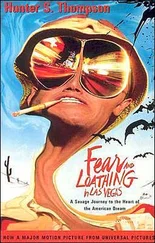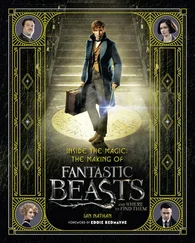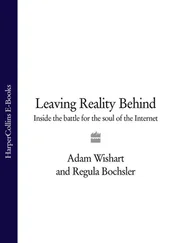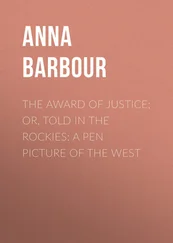In an op-ed column in the New York Times , former president Jimmy Carter hailed the global commission’s report as an extraordinary new initiative and pronounced its recommendations “profoundly important.” He pointed out that in 1977 he’d advised Congress that penalties leveled “against possession of a drug should not be more damaging to an individual than the use of the drug itself.” This simple concept has a wisdom that is immediately apparent. In the seventies, he wrote, the idea was widely accepted. 7No more. For every defendant who gets a break, there is a Patricia Marilyn Spottedcrow. In 2010, at age twenty-five, Spottedcrow was sentenced to twelve years in prison for selling thirty dollars’ worth of pot to an informant. 8A mother of four, she had no previous convictions. Kingfisher County, Oklahoma, judge Susie Pritchett handed down the sentence about a month before she retired. Her replacement later shaved four years off the sentence. “I’m sleeping next to people who have killed people, and they have less time than me,” Spottedcrow said a year after being processed into the Eddie Warrior Correctional Center. Her mother, Delita Starr, was convicted in the same case, but Pritchett suspended her thirty-year sentence so she could raise Spottedcrow’s children. Starr, who was earning eight dollars an hour at a truck stop, was also sentenced to five years of drug and alcohol monitoring. On top of it all, Pritchett leveled fines of $2,740 against Spottedcrow and $8,600 against Starr. Both women turned down plea deals of two years in prison because they thought that sentence excessive. After the facts of this bizarre case were picked up by national news media, the parole board and Governor Mary Fallin rushed through Spottedcrow’s early parole, and she was released after two years. 9
POINTLESS PENALTIES
Michelle Collette’s father was an addict who bounced in and out of jail during her childhood in Boston. Collette eventually became addicted to Percocet, a prescription painkiller, and she and her boyfriend also sold it. In August 2000 police raided their home and found 607 pills and $901 in cash. They also found more than fourteen grams of oxycodone, an even stronger painkiller, which triggered a five-year mandatory sentence. Collette’s boyfriend, who opted for a trial, was sentenced to fifteen years in prison. Collette took a deal for seven years.
At sentencing, Massachusetts Superior Court judge Isaac Borenstein took issue with the sentence that state law forced him to pronounce. “I do what the law requires me to do with not one ounce of pleasure,” he told Collette. “I don’t think this is fair. I don’t think this is what our laws are meant to do. It’s going to cost upwards of $50,000 a year to have you in state prison. Had I the authority, I would send you to jail for no more than one year… and a program after that.” 10A month into her sentence, Collette discovered she was pregnant, and she subsequently gave birth while chained to a hospital bed.
“TERRIBLE ESCALATION”
Richard Nixon, in 1971, was the first to use the term “war on drugs,” but the big shift came at the start of the 1980s, when President Reagan and Congress began directing policy “toward futile efforts to control drug imports from foreign countries.” According to Carter, “One result [of this shift] has been a terrible escalation in drug- related violence, corruption, and gross violations of human rights in a growing number of Latin American countries.” About 75 percent of new admissions to state prisons are for nonviolent crimes, and “the single greatest cause of prison population growth has been the war on drugs with the number of people incarcerated for nonviolent drug offenses increasing more than twelve-fold since 1980.” 11
There was no easing of the drug war under President Clinton, who raised the director of the Office of National Drug Control Policy (a.k.a. the drug czar) to cabinet-level status. Clinton, whose brother Roger had been addicted to cocaine, understood that drug use wasn’t always the harmless pursuit that advocates like the late Hunter Thompson alleged it to be. Clinton ended up signing off on a number of strict bills that treated users and small-time dealers like enemy combatants. At the end of his term, he pardoned his brother, but his hard-line policies persisted. Later, he had a change of heart and appeared with Carter in a 2012 documentary by filmmaker Sam Branson called Breaking the Taboo , which called for an end to the ill-conceived war on drugs. The film, narrated by Morgan Freeman, includes pleas from Bill Clinton, Jimmy Carter, former Colombian president Juan Manuel Santos, and other former world leaders, who all call for a halt to the “war” and the creation of a global policy that will confront the drug problem without futile reliance on excessively punitive policies that don’t work. 12
In the summer of 2011 Inimai Chettiar, American Civil Liberties Union (ACLU) policy counsel, noted that the report by the Global Commission on Drug Policy was yet another in a long line of studies condemning U.S. drug policy as nonsensical. “In no other area of criminal law,” he said, “do we lock up huge numbers of people because they might pose threats to themselves, but have done nothing to harm another person…. Prison neither treats nor trains nor rehabilitates. Instead, prison makes people more likely to commit crimes in the future and makes them effectively unemployable with little hope of a future.” 13
Advocates for generic hard-line punishment argue that perspective comes only from seeing victims in the flesh and hearing their stories. But drug users brought into the courthouse, generally in chains because they can’t afford to post bail, are their own victims. They are the human element in the story.
“I was a public defender in the far southeastern corner of Kentucky,” said Nathan Miller, who entered private practice after serving more than a year with the state.
There, if you are caught with drugs, you might as well be caught with a dead body or child porn. The commonwealth attorney’s offers were shocking to the senses in all felony drug-trafficking cases. For example, when a first-time offender caught selling to a confidential informant via a controlled buy that involved only one pill (usually Oxycontin), the standard offer was three years in state prison. The max is five for such an offense. On two different occasions, I had a client that wanted their day in court. The evidence was clear and there was no doubt there would be a guilty verdict.
In Kentucky jurors can set the sentence, and in both cases the jury came back with two years after the commonwealth asked for the max. “This seemed to anger the prosecution,” said Miller. 14
One could argue that Miller’s two clients were fortunate to receive a year less than the plea deal they’d been offered. But it could also be argued that imposing a two-year sentence for selling one prescription painkilling pill is an absurd waste of government resources and incredible overkill in terms of teaching lessons to the first-time offender. The two juries, once they examined actual circumstances and measured them against the standard penalty, clearly concluded that the standard penalty was excessive. One has to wonder whether courts that routinely mete out these over-the-top sentences have lost sight of how long it takes for two or three years to pass—or, for that matter, how long a week can seem to an individual who is stuck in a cell. And then, of course, there is the difficulty of spending a lifetime struggling against the stigma of being an ex-convict.
TINY WORLD OF ADDICTS
Addicts tend to choose cocaine, crack cocaine, methamphetamines, or heroin on a mostly exclusive basis, forming a kind of tribal loyalty around their drug of choice. Interviewers find over and over that each tribe tends to look askance at the others. This is the case even in homeless encampments. Acquiring drugs becomes the center of the addicts’ universe. They’re like greyhounds perennially chasing a mechanical rabbit. The behavior can manifest itself gradually or quite quickly. In his autobiography Life , recovered heroin addict and Rolling Stone lead guitarist Keith Richards bragged that thanks to his worldwide contacts, he was able to obtain high-quality heroin with little trouble just about everywhere. But elsewhere in the same book he described risking life and limb in various underworld hell-scapes as he desperately chased down another fix. 15
Читать дальше
